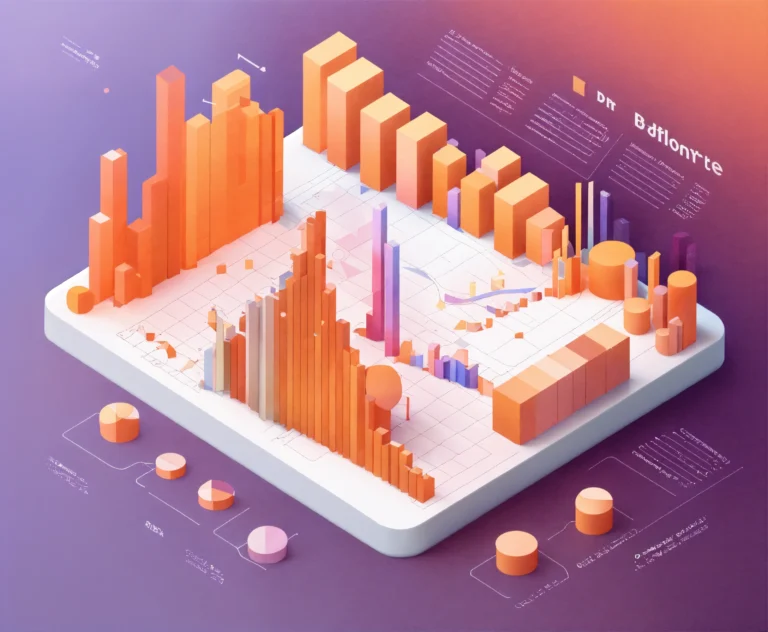Boosting your customer experience is crucial in today’s competitive market, and incorporating RFID technology offers innovative solutions to achieve this goal. By utilizing Radio Frequency Identification, you can streamline inventory management, enhance product tracking, and significantly reduce waiting times for your customers. This technology not only improves operational efficiency but also provides valuable insights into customer behavior, allowing you to tailor your services and offerings. As a result, your customers will enjoy a more personalized and efficient experience, fostering loyalty and boosting your bottom line.
Understanding RFID Technology
What is RFID?
The Radio Frequency Identification (RFID) technology involves the use of electromagnetic fields to automatically identify and track tags attached to objects. These tags can store data that can be read by RFID readers, enabling seamless communication between devices. This innovative technology has found applications across various industries, enhancing operational efficiency and improving customer experiences.
How RFID Works
Understanding how RFID operates begins with the interaction between three main components: tags, readers, and antennae. Tags, which can be passive or active, store data that is transmitted when in range of a reader. The reader emits radio waves that activate the tags, allowing communication to occur. This process enables the quick and accurate collection of data, streamlining operations and enhancing your inventory management.
For instance, RFID technology allows you to efficiently monitor stock levels in real-time. When an item is scanned by an RFID reader, the data is instantly updated, reducing the risk of human error often associated with manual inventory checks. The elimination of cumbersome barcoding practices ultimately improves your operational speed while ensuring accuracy. Beyond inventory, RFID can enhance customer experiences through personalized service, allowing you to tailor your offerings based on captured data insights. By leveraging the positive aspects of RFID, you can improve efficiency and increase customer satisfaction.
Applications of RFID in Customer Experience
Little did you know, Radio Frequency Identification (RFID) technology is revolutionizing the way businesses interact with customers, boosting overall customer experience in various ways.
Enhancing Supply Chain Visibility
Customer experience is significantly improved when businesses can provide real-time visibility into their supply chains. With RFID tracking, companies can monitor inventory levels, ensuring that popular items are always available for purchase. This transparency helps reduce stockouts and delays, making the shopping experience smoother for you.
Streamlining Checkout Processes
With the adoption of RFID, businesses can simplify and expedite the checkout process. You no longer have to wait in long lines as RFID readers can scan multiple items simultaneously, allowing for a faster transaction.
Another advantage of streamlining checkout processes with RFID is the reduction in human error. By minimizing manual scanning and potential mistakes, businesses can ensure the price accuracy of your purchases, leading to greater satisfaction. Furthermore, NFC-enabled RFID systems can facilitate contactless payments, enhancing both convenience and safety, especially in a post-pandemic world.
Personalizing Customer Interactions
To create a memorable shopping experience, businesses are leveraging RFID to tailor interactions to individual preferences. This technology can collect data on your shopping habits and help teams suggest products and promotions specifically suited to your interests.
Supply chain data combined with RFID technology allows businesses to understand your preferences and personalize marketing strategies effectively. By analyzing your purchasing patterns, they can offer you special discounts, product recommendations, and an enhanced loyalty program experience, making your relationship with the brand even more engaging and valuable.
Benefits of RFID for Businesses
Keep in mind that RFID technology can significantly enhance your operations, providing various advantages that can streamline processes and improve customer satisfaction.
Increased Operational Efficiency
To maximize productivity, implementing RFID systems allows you to automate manual tasks, reduce errors, and speed up processes. This ultimately leads to more efficient workflows, enabling your staff to focus on higher-level activities that drive your business forward.
Improved Inventory Management
Benefits of RFID technology in inventory management cannot be overstated. It provides real-time insights into stock levels, allowing you to make data-driven decisions that prevent overstocking or stockouts, ensuring that your customers receive what they need, when they need it.
Another critical advantage is the ability to perform instant audits and track items throughout your supply chain. This means you can reduce shrinkage, discover discrepancies swiftly, and maintain accurate inventory records, all while saving you valuable time and resources.
Enhanced Data Collection and Analytics
Collection of data through RFID technology transforms the way you understand customer behaviors and preferences. It provides you with access to detailed insights that can help you tailor your services to meet your clientele’s needs.
With enhanced data collection and analytics, you can analyze trends, optimize your operations, and make informed decisions that align with your business strategy. This not only fosters a better customer experience but also helps you identify new business opportunities, giving you a competitive edge in your industry.
Challenges and Considerations
To effectively implement RFID technology, it’s crucial to navigate several challenges and considerations that can impact your customer experience positively or negatively.
Cost Implications
An initial investment in RFID technology can be significant, leading to budgetary constraints for many businesses. You must evaluate both the upfront costs for hardware and software and the ongoing expenses related to maintenance and upgrades to ensure a feasible deployment.
Integration with Existing Systems
For your RFID solution to be effective, it needs to seamlessly integrate with your current systems. You may face challenges in aligning new software with your existing infrastructure, which can cause disruptions in your workflow and customer service.
Understanding your current systems is key to a successful integration. You must assess your existing database management, inventory tracking systems, and CRM applications to develop a robust framework that supports RFID technology. Ensuring compatibility and training your staff on the new system will also greatly enhance your operational efficiency.
Privacy Concerns
Implications arise when implementing RFID technology regarding the privacy of your customers. It’s crucial to recognize that tracking customer behavior can lead to potential data misuse or breaches if not handled responsibly.
Privacy is a significant concern with RFID technology, as it can raise questions about how your business collects and uses customer data. To mitigate these risks, you need to establish clear policies on data collection and utilization, ensuring that your customers feel secure and respected. Transparency and robust security measures play vital roles in maintaining trust while leveraging the benefits of RFID technology.
Final Words
From above, it is clear that integrating RFID technology into your business can significantly enhance customer experience. By enabling efficient inventory management, reducing wait times, and providing personalized service, you can create a seamless shopping journey that meets and exceeds your customers’ expectations. As you harness the power of RFID, you not only improve operational efficiency but also build lasting relationships with your customers. Embracing this technology could be the key to staying competitive in a rapidly evolving market.
FAQ
Q: What is RFID technology and how can it enhance customer experience?
A: RFID (Radio Frequency Identification) technology uses electromagnetic fields to automatically identify and track tags attached to objects. In retail and customer service contexts, RFID can enhance customer experience by streamlining inventory management, enabling faster checkouts, and improving product availability. By having real-time visibility of stock levels, businesses can ensure popular items are always available, reducing customer frustration and increasing satisfaction.
Q: How does RFID improve the efficiency of the shopping experience?
A: RFID improves shopping efficiency by automating inventory processes, which reduces the time customers spend looking for products. With RFID, stock levels can be accurately monitored in real-time, allowing customers to find what they need quickly. Furthermore, RFID-enabled self-checkout systems allow for quicker transaction times, minimizing the wait time at the cash register and making the overall shopping experience smoother and more enjoyable.
Q: What are some examples of how businesses use RFID to boost customer engagement?
A: Businesses utilize RFID technology in various ways to boost customer engagement. For instance, some clothing retailers use RFID tags to offer personalized shopping experiences by analyzing customer preferences and suggesting products via digital displays in stores. Additionally, loyalty programs can be enhanced with RFID, allowing customers to quickly earn and redeem rewards using RFID-enabled cards or smartphones. Moreover, event-based RFID wristbands can be used in venues to facilitate seamless transactions for merchandise and concessions, enhancing overall customer engagement at events.




